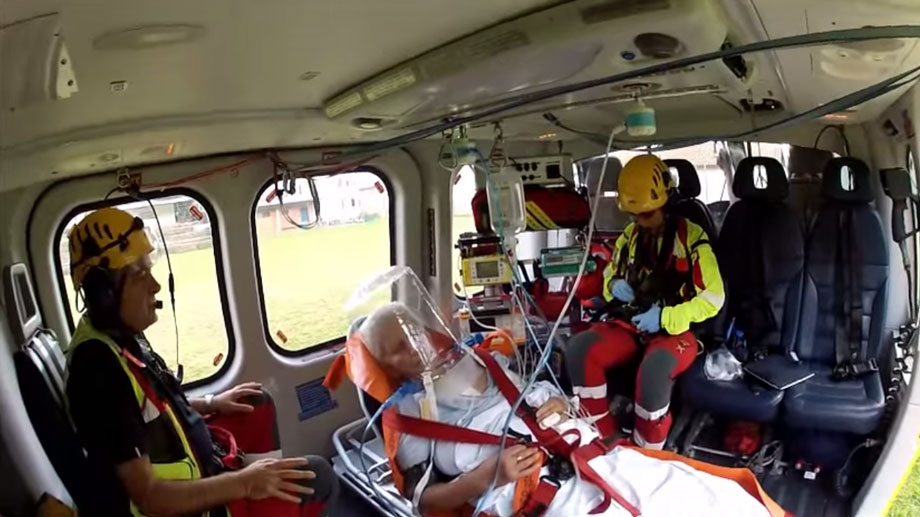
CPAP during HEMS operations - HEMS Congress Poster
This scientific poster was presented during the HEMS Congress exhibition in Massa, Italy. The author is Dr. Alberto Baratta, medical director of the Emergency Unit in Massa (Italy) and medical chief of the HEMS base of Massa, Pegaso 3.
FOR THE ITALIAN VERSION CLICK HERE
Continuous positive airway pressure (CPAP) is a form of positive airway pressure ventilator, which applies mild air pressure on a continuous basis to keep the airways continuously open in a patient who is unable to breathe spontaneously on his or her own. It is an alternative to positive end-expiratory pressure (PEEP). Both modalities stent the lungs’ alveoli open and thus recruit more of the lung’s surface area for ventilation. But while PEEP refers to devices that impose positive pressure only at the end of the exhalation, CPAP devices apply continuous positive airway pressure throughout the breathing cycle. Thus, the ventilator itself does not cycle during CPAP, no additional pressure above the level of CPAP is provided, and patients must initiate all of their breaths.
CPAP typically is used for people who have breathing problems, such as sleep apnea. CPAP also may be used to treat preterm infants whose lungs have not yet fully developed. For example, physicians may use CPAP in infants with respiratory distress syndrome. It is associated with a decrease in the incidence of bronchopulmonary dysplasia. In some preterm infants whose lungs haven’t fully developed, CPAP improves survival and decreases the need for steroid treatment for their lungs.
CPAP at home utilizes machines specifically designed to deliver a constant flow or pressure. Some CPAP machines have other features as well, such as heated humidifiers. CPAP is the most effective treatment for obstructive sleep apnea, in which the mild pressure from CPAP prevents the airway from collapsing or becoming blocked.[1]
Although delivery of CPAP through nasal mask is the most common modality of treatment, other systems exist for interfacing with adults and children. Nasal CPAP is frequently used in infants[citation needed], though its use is controversial[citation needed]. Studies have shown nasal CPAP reduces ventilator time but an increased occurrence of pneumothorax was also prevalent.[2] Oral mask, and naso-oral masks are often used when nasal congestion or obstruction is an issue. Devices that combine nasal pressure with maxillary advancement devices (MAD) also exist.
[document url=”http://www.hemscongress.com/materiali/poster_baratta_La%20CPAP_in_Elicottero.pdf” width=”600″ height=”720″]


